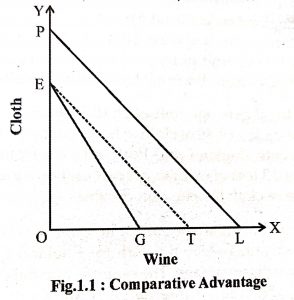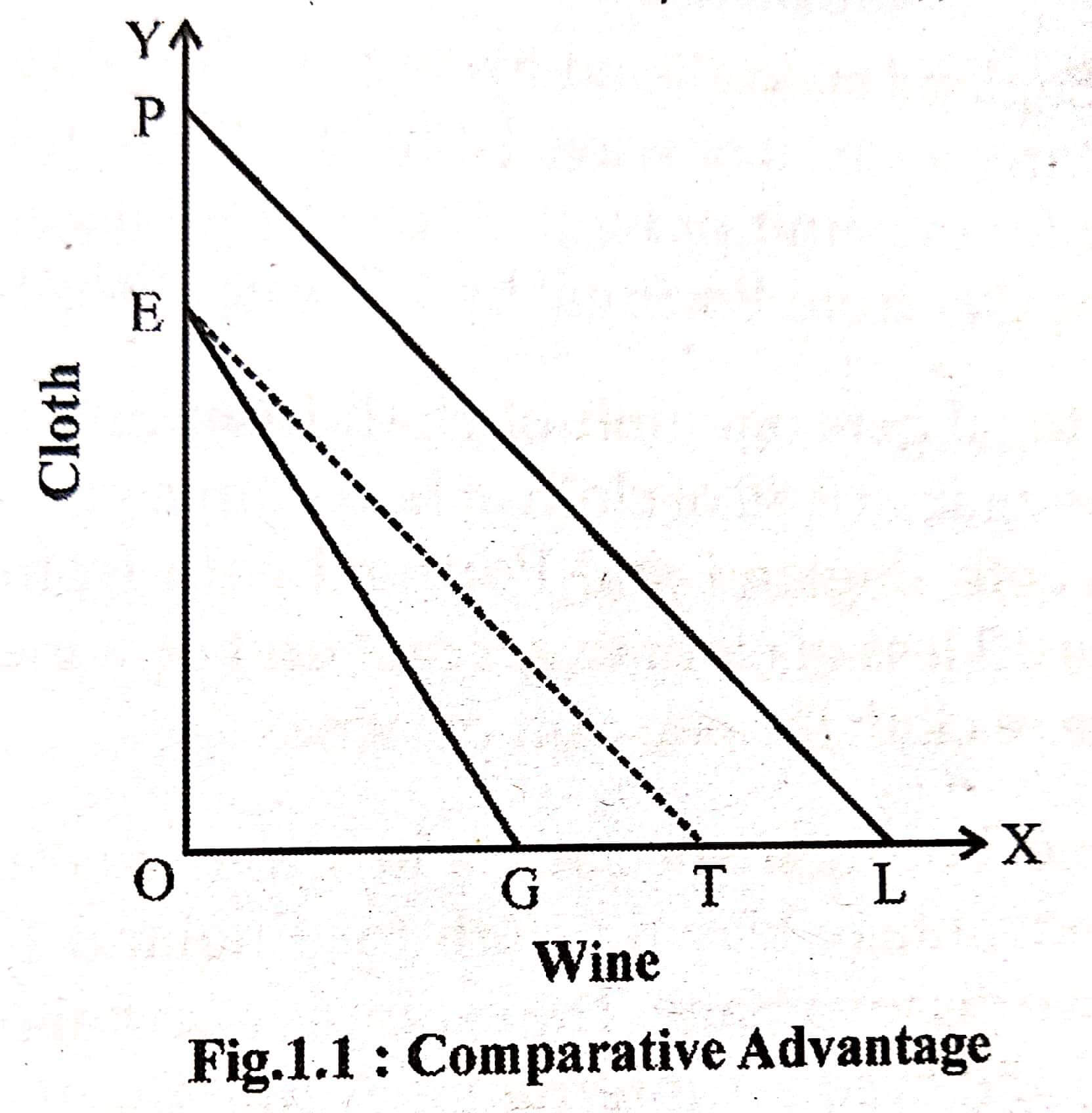Ricardian theory of comparative cost advantage: Business Economics
Ricardian theory of comparative cost advantage
- Ricardian theory of comparative cost advantage/International trade deals with trade between the countries. It involves the export and import of goods and services.
- According to the principle of comparative cost advantage, each country will produce and export those commodities in the production of which it has a special advantage owing to natural resources, capital stock, and labour skills, climatic conditions.
- The Ricardian theory of comparative cost advantage theory states that “each country will specialize in the production of those commodities in which it has a greater comparative advantage or less comparative disadvantage.”
Ricardian theory of comparative cost advantage based on the following assumptions:
- There are two countries and two commodities
- Cost of production is measured in terms of labour i.e. value of a commodity is measured in the terms of labour hours.
- Labour is the only factor of production other than natural resources
- All labour units are homogeneous
- The factor of production is mobile within the country but perfectly immobile between the countries.
- Full employment exists in both countries.
- There is no transport cost.
- There is free trade i.e. the movement of goods between countries is unrestricted.
- Production is subject to constant return to scale.
- There is perfect competition both in commodity and factor markets.
On the basis of the above assumptions, David Ricardo explained his comparative cost difference theory, taking England and Portugal as two countries and wine and cloth as two commodities.
| Country | 1 Unit of Wine | 1 Unit of Cloth |
| England | 120 L | 100 L |
| Portugal | 80 L | 90 L |
Portugal requires fewer hours of labor for both wine and cloth. one unit of wine in Portugal is produced with help of 80 labour hours against 120 labour hours required in England. In the case of cloth, Portugal requires fewer labour hours than England.
Ricardo tried to prove that Portugal stands to gain by specializing in the commodity in which it has greater comparative advantages. Portugal has the advantage of the lower cost of production both in wine and cloth. however the difference in cost, that is the comparative advantage is greater in the production of wine then cloth.
Portugal has the advantage of the lower cost of production both in wine and cloth. however the difference in cost, that is the comparative advantage is greater in the production of wine then cloth.
So from the above table, Portugal specialized in Wine and England in Cloth.
- In the above diagram, PL and EG are the production possibilities curves of Portugal and England receptively. Portugal has an absolute advantage in the production of both commodities as OP>OE and OL>OG.
- ET line which is parallel to PL tells us that Portugal has a greater comparative advantage in the production of wine as it can produce OT of wine which is greater than OG, and England is specialized in cloth.
International Trade Ricardian Theory of Comparative Cost, Ricardian theory of comparative cost advantage,
For More Business Economic Notes Click Here
Reference: ML Jhingan, Economics Discussion



Good